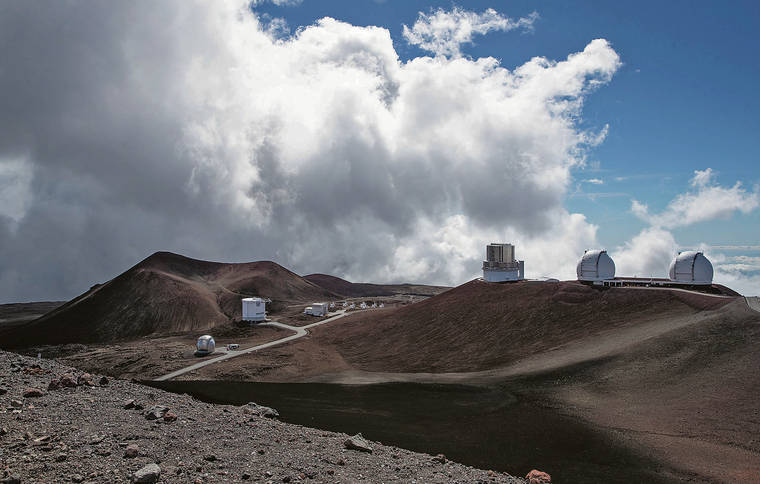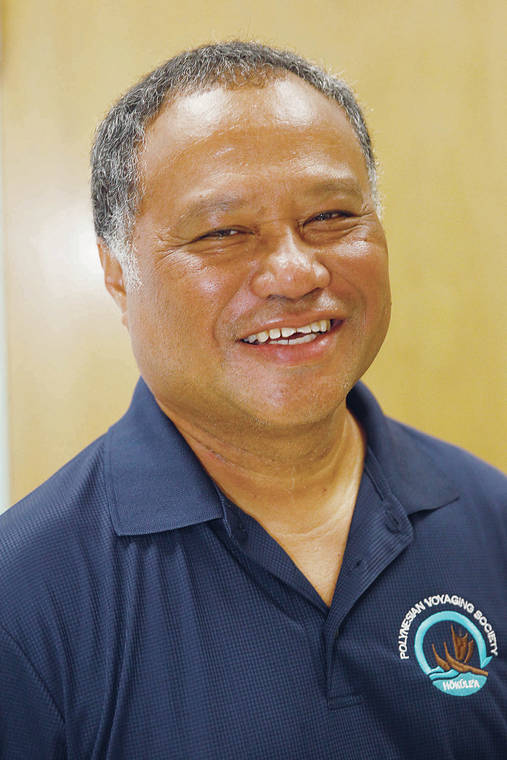Local support for Thirty Meter Telescope has been strong for years

CINDY ELLEN RUSSELL / CRUSSELL@STARADVERTISER.COM
The summit of Mauna Kea is studded with telescopes.

STAR-ADVERTISER
“It (TMT) offered community benefit packages that have raised the bar in terms of what they are committed to doing. And that’s not an attempt to buy people off.”
Chad Kalepa Baybayan
Former captain and navigator of the Hokule‘a


While media coverage of the Thirty Meter Telescope has been dominated by images of hundreds of protesters trying to block construction of the project, support for the telescope has been strong throughout the state in recent years.
About three-fourths of local residents have said they support the telescope in Honolulu Star- Advertiser polls conducted in 2016 Opens in a new taband 2018 Opens in a new tab. The polling also suggested growing support among Native Hawaiians, with 72% of those polled saying they supported the project in 2018, a significant increase from earlier polls.
Supporters say the telescope — designed to allow scientists to see deeper into space and maybe even discover life beyond Earth — will benefit not just science, but the local community by creating jobs and educational opportunities.
While several hundred opponents Monday massed on Mauna Kea, a smaller number of TMT advocates rallied in Hilo to show support.
The project is expected to create about 300 construction jobs during its decade-long construction phase, according to the TMT International Observatory, which is overseeing the telescope’s construction and future operations.
Once completed, it’s estimated that TMT will spend about $40 million annually on operations and employ about 140 people. The organization has pledged to fill as many positions as possible with local residents. Some 84% of those jobs are planned for the fields of science, engineering, software and information technology. Another 16% are for management and administrative jobs.
Don't miss out on what's happening!
Stay in touch with breaking news, as it happens, conveniently in your email inbox. It's FREE!
TMT also launched The Hawaii Island New Knowledge Fund, known as THINK, in 2014 to assist Hawaii island students with science, technology, engineering and math skills. TMT contributes $1 million annually to the fund.
Chad Kalepa Baybayan, who described himself as a science literacy advocate and served as a captain and navigator aboard the Hawaiian voyaging canoe Hokule‘a, said he supported the project, in part, just for the sheer wonder of learning about the universe. He said the telescope could also help advance other technologies, particularly in the field of imaging.
Baybayan said TMT has set a good example when it comes to working with the community.
“TMT has done more for advancing the agenda of being good stewards of the mountain than any other telescope,” he said. “It offered community benefit packages that have raised the bar in terms of what they are committed to doing. And that’s not an attempt to buy people off.
“If you look at the community benefits package, I see it as a way of them paying their moral obligation for the privilege of being able to use the mountain.”
Richard Ha, a board member of PUEO, a nonprofit dedicated to enhancing educational opportunities for Hawaii youth, said he believes the project can help diversify the Hawaii economy.
“We cannot keep on doing sun-and-surf tourism,” he said.
Ha, who is Native Hawaiian, also wants there to be a new cultural center at the top of the mountain.
“I’m trying to make the case that down the road we would like to have respect for Hawaiian culture, and we need to have a space that is sufficiently big so we look like we are in control of the mountain,” he said. “We can’t do it from below the clouds. … We’ll be irrelevant as Hawaiian people.”
Protests so far have been dominated by Native Hawaiians who see the telescope as a desecration of a sacred mountaintop. Protesters were able to halt work on the project in 2015 and further delay it with legal challenges. It’s been a decade since the TMT board of directors selected Mauna Kea as its preferred site.
Thayne Currie, a Mauna Kea astronomer and TMT supporter, said he didn’t think the protests would hurt public support for the project.
“My sense is that the community, if you don’t talk to the activists, the community is just by and large tired of this, and they just want to move on,” he said.
“I can possibly see a case where there is even more opposition to the protesters, depending on what they do. But I feel like we’re probably at the point where we kind of know what fraction of the community supports the project and what fraction of the community opposes it.”
TMT FACTS
>> Cost: $1.4 billion
>> Building size: 180 feet tall, about equal to an 18-story building
>> Telescope size: 30 meters in diameter — three times as wide, with nine times more area, than the largest currently existing visible-light telescope in the world
>> Resolution: Images more than 12 times sharper than those from the Hubble Space Telescope
>> Use: Lead us closer to finding out whether life exists beyond Earth, among other uses
>> Starting line: Mauna Kea selected as preferred site on July 1, 2009
>> Completion: Construction expected to take 10 years
Source: TMT; Star-Advertiser research





